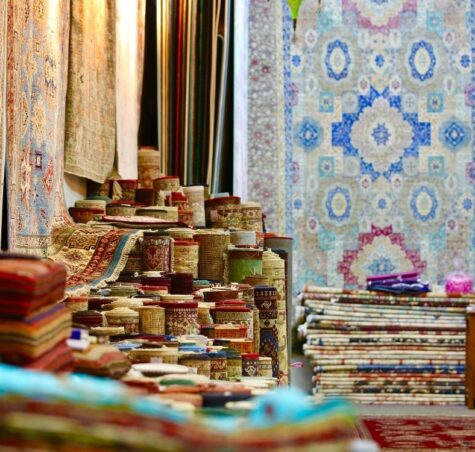History of Carpets
Carpet weaving came to India when Mughals extended their rule from Kabul to India to build Mughal Empire. When Babar came to India, he brought hand-knotted carpets with him but the real credit of introducing the carpet weaving techniques and carpet making is given to Akbar. Under his reign, the art of weaving was introduced and Indian craftsmen adopted the Persian techniques and designs.
Carpets woven during the medieval period had Persian designs but gradually, the Indian craftsmen created a style that blended with the Indian art and design patterns. Indian carpets are recognised for their designs because of fine detailing and presentation of realistic attributes. Indian carpets are known for their high density of knotting and are much sought-after in the west. The carpet industry in India flourished mostly in northern part with major centres found in Kashmir, Jaipur, and the many cities of Uttar Pradesh including Agra, Sitapur, Mirzapur and Bhadohi.
Bhadohi is a district near Varanasi in Uttar Pradesh, India which is also known as the “City of Carpets“. It is one of the major producer and supplier of carpets. Home to one of the largest hand knitted and hand woven carpet industry, Bhadohi produces a wide variety of ethnic and modern day carpets.
Contact us today to get a quote on finest bespoke rugs and carpets

